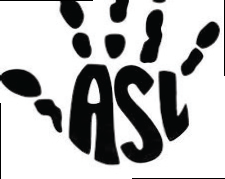Silent Inspiration
Although it’s been a component of education at HCC for years, American Sign Language is a series of foreign language courses that are completely unique. Although not a spoken language, ASL is just as difficult to learn as any other, featuring its own grammar and syntax.
At HCC, there are half a dozen professors that teach ASL, ranging across each of the main campuses. Overshadowed in favor of languages like French and Spanish, ASL classes are smaller and more intimate than other courses at HCC. Students begin by learning the alphabet and single-digit numbers, and by the end of the course are able to sign quite a bit of vocabulary, some even signing an entire fairy tale for their final exam. They also learn about Deaf culture, and are required to attend events in the Bay area pertaining to deafness and signing.
“It’s almost like learning to talk all over again,” said Natasha Ketchman, an ASL student at the Dale Mabry campus. “For people like me who are more visual learners, it just makes sense. But I think a lot of people don’t know about it, because the classes are really small.”
Learning a new language can be overwhelming, but through sign language, it becomes easier to learn by observing. Many of the ASL courses at HCC are taught by total immersion; the instructors, some being deaf themselves, teach only by signing and writing, not by speaking. It would be impossible to teach any other la nguage this way, as the students would be completely in the dark.
nguage this way, as the students would be completely in the dark.
Through learning new signs each chapter and piecing together sentences, the students gradually build a vocabulary and are better able to understand their instructors. The outcome speaks volumes for the merit of this particular teaching method, which teaches students to sign the same way you would teach a child to speak.
Although the small class sizes are beneficial to each student’s learning process, to expand the ASL program by spreading the word is important. Have you completed your foreign language requirement? If not, consider taking ASL. You won’t be sorry you did. For more information, contact the registrar’s office or see an academic advisor.
